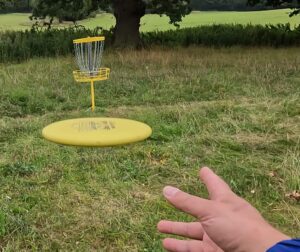Disc Golf Disc Maintenance: Essential Tips for Keeping Your Discs in Top Condition
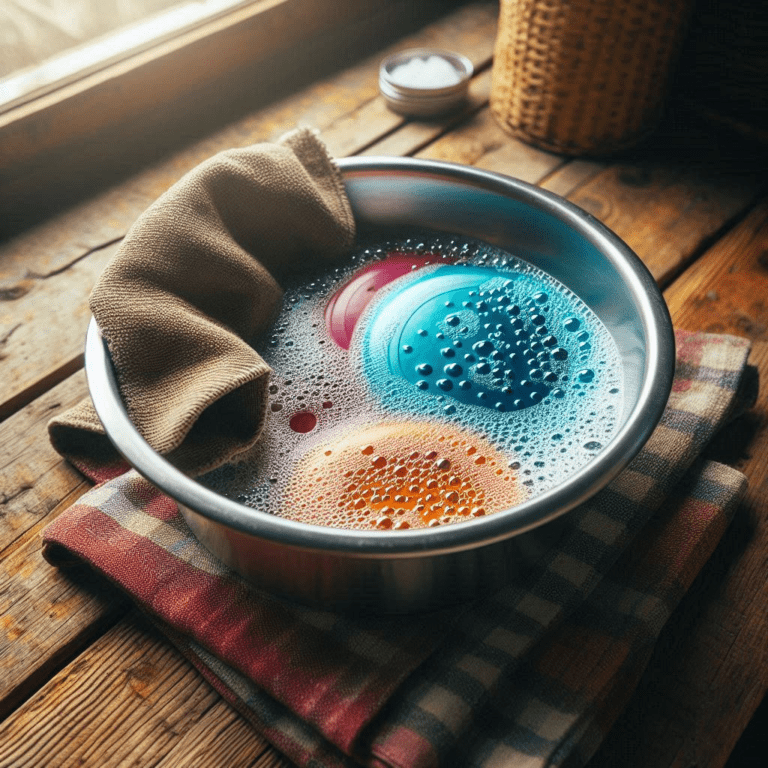
You step up to the tee, ready to launch a powerful drive with your favorite disc. But a quick check reveals a layer of grime hindering your grip, and a small nick raising concerns about the disc’s flight. This scenario highlights the importance of disc golf disc maintenance. Without proper care, your discs can become unreliable, impacting your throws and potentially leading to frustration. Fear not, disc golfer! This comprehensive guide delves into the world of golf disc maintenance. Here, you’ll discover simple yet effective strategies to keep your discs in top condition, ensuring smooth throws and confident control on the course. So, grab your discs, and let’s get your game soaring!
Disc golf discs are your loyal companions on the course. They take a beating – battling wind, trees, and maybe even the occasional rogue squirrel. But just like any good teammate, they need some TLC to perform at their best.
How to Maintain Disc Golf Discs for Optimal Performance?
Mastering disc golf disc maintenance is a two-pronged approach: taking care of your discs and preparing them for the season. We’ll break it down step-by-step.
Disc Golf Disc Maintenance: Daily and Weekly Care Routines
Developing a daily and weekly care routine keeps your discs in pristine condition. Here’s the lowdown:
- Post-Game Clean Up: After a round, wipe off any mud or debris with a damp cloth. Don’t let dirt build up, impacting grip and flight patterns.
- Weekly Deep Clean: For a more thorough clean, use warm water with a mild dish soap. Avoid harsh chemicals or abrasive sponges that can damage the plastic. Rinse thoroughly and dry completely with a microfiber towel to prevent water spots.
- Storage Solutions: Invest in a quality disc golf bag or storage rack. This protects your discs from warping and keeps them organized for easy access.
How Do You Keep Discs in Good Condition?
Here’s the secret sauce for keeping your discs happy and healthy:
- Cleanliness is Key: Dirt, grime, and even grass clippings can affect a disc’s flight. Regular cleaning ensures optimal performance.
- Temperature Matters: Extreme heat or cold can warp discs. Avoid leaving them in hot cars or freezing temperatures.
- Regular Inspections: Take a close look at your discs frequently. Check for nicks, gouges, or cracks that might need repair.
By following these simple steps, you’ll extend the lifespan of your discs and maintain their flight characteristics.
How to Care for Disc Golf Discs?
Now, let’s get down to the nitty-gritty of cleaning:
- Mild Soap and Water: This is your go-to cleaning solution for most situations. It’s gentle yet effective at removing dirt and grime.
- Specialized Disc Cleaners: For stubborn stains or deeper cleaning, consider using disc golf-specific cleaners. These are formulated to be safe for disc plastics.
- Drying and Storage: After cleaning, dry your discs completely with a microfiber towel. Leaving them damp can lead to mold or mildew growth. Store them in a cool, dry place to prevent warping.
A handy companion for both on-the-course cleaning and post-maintenance drying is the Disc Raptor. This innovative tool boasts a dual-cleaning system that tackles dirt and moisture efficiently. Its microfiber interior absorbs grime, while the textured spine scrapes away stubborn mud. The compact design with a built-in loop makes it easy to attach to your bag, eliminating the need for bulky towels. Plus, the Disc Raptor doubles as a knee pad for those crucial kneeling putts!
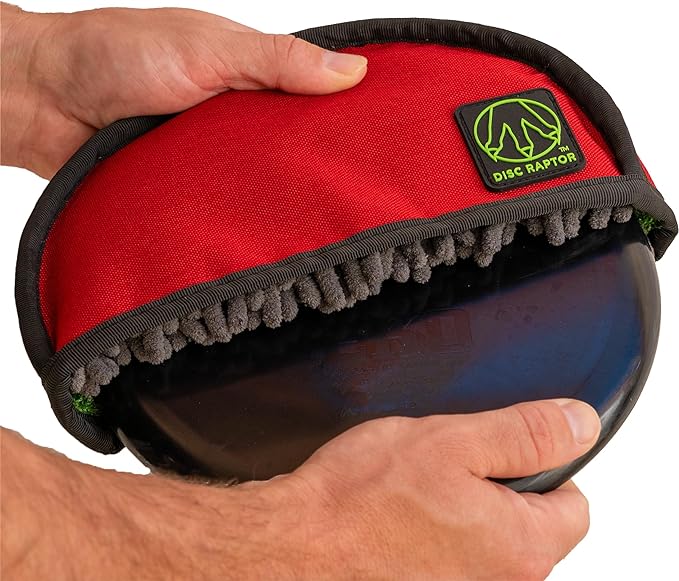
Remember, a little TLC goes a long way in keeping your discs performing at their peak.
Disc Golf Disc Maintenance: Prepping Your Discs for the Season
As the weather warms and the disc golf season approaches, it’s prime time for disc golf equipment prep. Here’s what you need to do:
What Is Disc Golf Equipment Prep?
Think of this as a pre-season tune-up for your discs and other gear. Here’s a handy checklist:
- Disc Inspection: Give your discs a thorough examination, looking for any damage that might need repair.
- Cleaning Extravaganza: Deep clean all your discs to remove any built-up dirt or grime from the off-season.
- Disc Selection Strategy: Review your disc selection based on the courses you typically play and your personal throwing style. Consider adding or removing discs as needed.
- Gear Check: Inspect your disc golf bag, shoes, mini markers, and other accessories. Replace anything worn or damaged.
By following these steps, you’ll ensure your entire disc golf arsenal is ready to hit the ground running when the season starts.
Is It Bad to Leave Disc Golf Discs in the Cold?
While freezing temperatures won’t necessarily destroy your discs, it’s not ideal. Here’s why:
- Plastic Stiffness: Cold weather can make disc plastic more brittle, potentially affecting its flight path and grip.
- Warping Woes: Extreme temperature fluctuations can cause discs to warp, impacting their stability and accuracy.
While freezing temperatures won’t necessarily destroy your discs in relatively mild winter temperatures, it’s definitely not ideal. I remember a time in my early disc golf days when a few Pro D Cyclones met their demise with a disheartening crack after glancing off a tree on a chilly round? Yep, cold weather can make disc plastic more brittle, potentially affecting its flight path and grip, just like what happened to my Discraft Cyclone’s. Beyond that, extreme temperature fluctuations can also cause discs to warp, impacting their stability and accuracy.
Here’s the takeaway: Stash your discs in a cool, dry place during winter to maintain their optimal performance.
Does Heat Ruin Discs?
Just like extreme cold, excessive heat can be detrimental to your discs. Here’s how:
- Melty Mayhem: In extreme heat, discs can warp or even melt, rendering them unusable.
- Plasticity Problems: High temperatures can make disc plastic more pliable, affecting its flight characteristics and overall performance.
The Fix: Avoid leaving your discs in direct sunlight or hot cars for extended periods. Store them in a cool, dry place to keep them happy and flight-ready.
How Do You Rejuvenate Your Discs?
Even the most loved discs can lose their grip and flight characteristics over time. But fear not, there are ways to bring them back to life!
- Hot Water Bath: For slightly less grippy discs, a warm water bath (around 120°F/50°C) can help restore some flexibility. However, be cautious – excessively hot water can warp the disc.
- Plastic Softeners: There are disc golf-specific plastic softeners available that can help rejuvenate older discs. Follow the manufacturer’s instructions carefully to avoid damaging the plastic.
Remember: Sandpaper comes into play here too! For minor nicks or surface imperfections that affect grip, light sanding with a fine-grit sandpaper can smooth things out. But remember the PDGA Rule 813.01 – avoid excessive sanding that could alter the disc’s flight path and make it illegal for competition. Stick to light touches to restore grip without compromising performance.
Top Tip: Regular cleaning and proper storage go a long way in preventing the need for disc rejuvenation.
Can I Put My Disc Golf Discs in the Dishwasher?
The short answer is no. While it might seem like a convenient way to clean your discs, dishwashers are a big no-no for several reasons:
- High Heat: Dishwasher cycles use hot water that can warp or melt your discs.
- Harsh Chemicals: Dishwashing detergents contain harsh chemicals that can damage the disc plastic and fade markings.
- Abrasive Racks: Discs can get banged around and scratched by the dishwasher racks.
Stick to the safe and effective methods mentioned earlier – warm water, mild soap, and a little TLC.
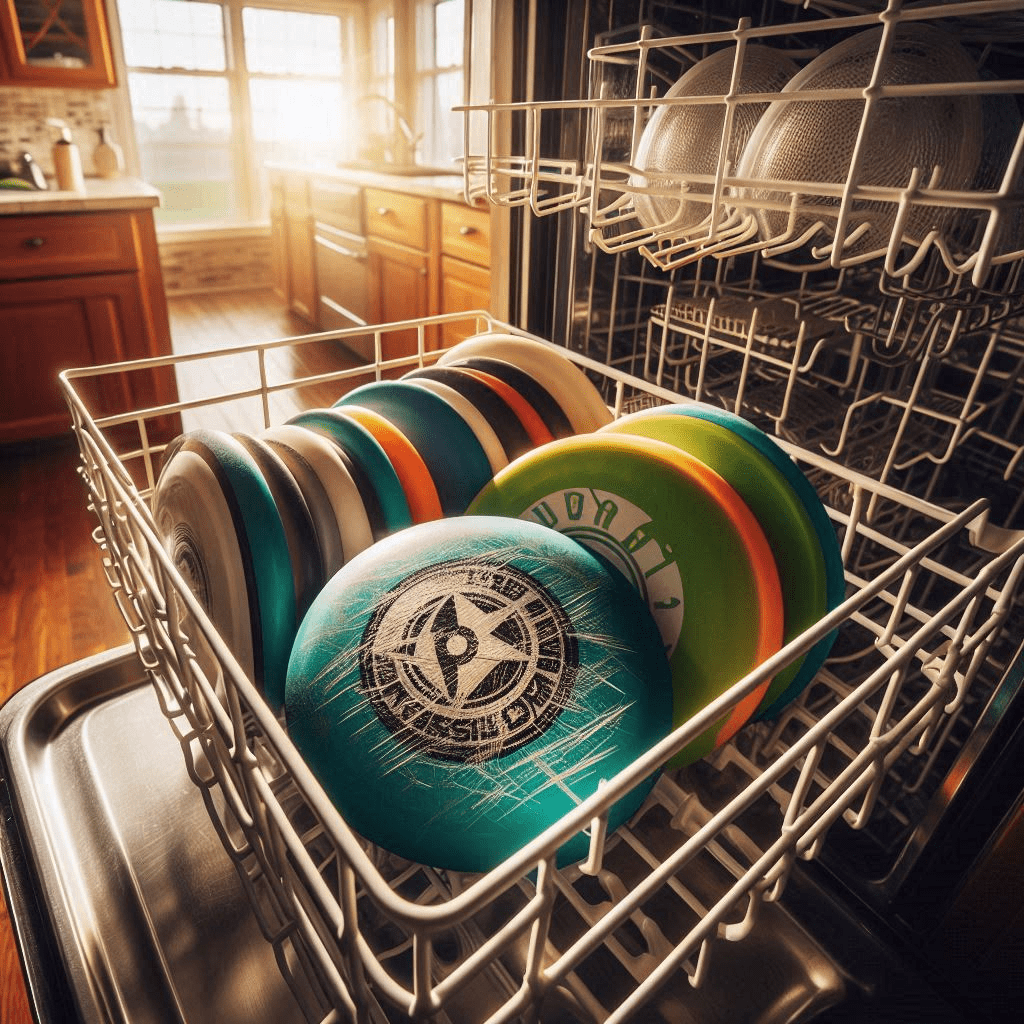
What Is the Best Way to Clean Disc Golf Discs?
Now that you know what not to do, here’s the best way to clean your disc golf discs:
- Gather Your Supplies: You’ll need a bucket, warm water, mild dish soap, a soft sponge, and a microfiber towel.
- Pre-Rinse: Remove any loose dirt or debris with a hose or a damp cloth.
- Soapy Scrub: Fill your bucket with warm water and add a few drops of dish soap. Gently scrub the disc with the sponge, paying attention to the rim and edges.
- Rinse and Repeat: Rinse the disc thoroughly with clean water to remove all soap residue. Repeat if necessary for stubborn stains.
- Drying Diva: Dry the disc completely with a clean microfiber towel. Leaving it damp can lead to mold growth.
Bonus Tip: For particularly grimy discs, you can add a splash of white vinegar to the cleaning solution. Vinegar is a natural disinfectant and can help remove stubborn grime without harming the disc.
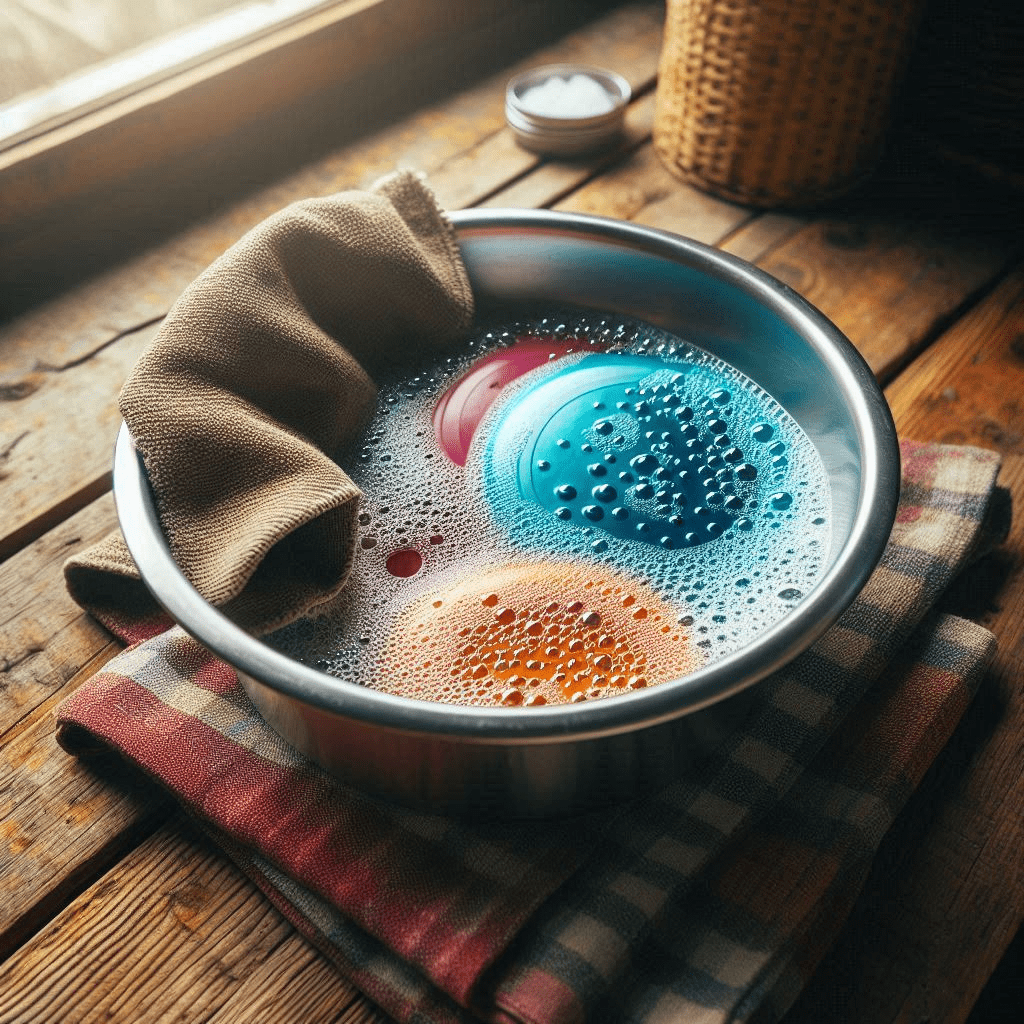
Does Sharpie Stay on Disc Golf Discs?
Sharpie is a popular choice for marking your discs, but its permanence depends on the type of disc plastic.
- Champion Plastic: Sharpie markings tend to hold up well on Champion plastic, known for its grippier texture.
- DX Plastic: DX plastic, known for its affordability, is less grippy and more prone to fading Sharpie markings over time.
Here are some tips for making Sharpie markings last longer:
- Use a permanent marker: Opt for a permanent Sharpie marker specifically designed for plastic surfaces.
- Double coat it: Apply two thin coats of Sharpie for better visibility and durability.
- Let it dry completely: Allow the marker to dry completely before using the disc.
Why Do Discs Warp?
Discs can warp for a few reasons, most commonly due to:
- Extreme Temperatures: Leaving discs in hot cars or freezing temperatures can cause them to warp. Discs are made from plastic, and like any plastic, they can become more pliable in high heat and more brittle in cold. This can cause the disc to lose its shape, impacting its flight characteristics and overall performance.
- Sunlight Exposure: Prolonged exposure to direct sunlight can also contribute to warping. The sun’s heat can cause uneven heating across the disc, leading to distortions.
Here’s an additional factor to consider:
- Improper Storage: Storing discs in a cramped space or under pressure can cause them to warp over time. Leaving them stacked on top of each other for extended periods is a recipe for disaster.
Preventing Warping:
- Temperature Control: Store your discs in a cool, dry place with moderate temperatures. Avoid leaving them in hot cars or freezing garages.
- Shady Spots: When on the course, keep your discs out of direct sunlight whenever possible. Utilize your disc golf bag or a shady spot under a tree for storage during your rounds.
- Storage Solutions: Invest in a quality disc golf bag or storage rack that allows for proper airflow and prevents discs from being crushed or warped.
By following these preventative measures, you can keep your discs flying straight and true for years to come.
How Do You Repair Minor Disc Golf Damage?
Even the most careful disc golfer will encounter minor nicks and scratches from time to time. But fear not, most of these can be repaired with a little DIY magic!
- Sanding for Smoothness: For minor nicks or surface imperfections, light sanding with a fine-grit sandpaper (think 320 or higher) can smooth things out and restore grip. Remember PDGA Rule 813.01! Avoid excessive sanding that could alter the disc’s flight path. A few light passes with the sandpaper should do the trick.
- Heat Gun for Minor Warps: For very slight warping, a carefully applied heat gun can help reshape the disc. However, this is a delicate process and should be attempted with caution. Here’s the key: Apply minimal heat only to the warped area, constantly monitoring the disc to avoid further damage. If you’re not comfortable with this method, it’s best to consult a professional as you will likely make it worse!
Pro Tip: Preventative maintenance is key! Regularly checking your discs for damage and addressing minor issues promptly can prevent them from becoming bigger problems down the road.
When Should I Retire My Disc Golf Disc?
Just like any piece of equipment, your discs won’t last forever. Here are some signs it’s time to say goodbye to a beloved disc:
- Excessive Cracking: Deep cracks that compromise the disc’s structural integrity are a major red flag. These discs can become dangerous and are best retired.
- Major Warping: If a disc is significantly warped and no longer flies predictably, it’s time for retirement.
- Loss of Grip: Over time, discs can lose their grippy texture, making them difficult to throw accurately. If cleaning and rejuvenation techniques don’t help, it might be time to replace the disc.
The Bottom Line: When a disc becomes unsafe, unpredictable, or simply no longer enjoyable to throw, it’s time to send it off to disc golf retirement.
What Do You Do with Old Disc Golf Discs?
Don’t just toss your old discs in the trash! Here are some creative ways to give them a second life:
- Recycle Programs: Some disc golf manufacturers offer disc recycling programs. Check with your favorite brand to see if they have one in place.
- Disc Golf Exchange or Sell: Many disc golf communities have online forums or marketplaces where you can sell or trade your used discs. or consider selling them on Ebay.
- Donate to New Players: Disc golf can be an expensive hobby to get into. Consider donating your old discs to a local club or program that helps new players get started.
- Get Crafty: Upcycle your old discs! Use them as plant saucers, frisbees for your dog, or get creative and turn them into wall art.
By giving your old discs a new purpose, you’re reducing waste and contributing to the disc golf community!
This guide has hopefully equipped you with the knowledge and tools to become a disc golf disc maintenance master. Remember, with a little TLC, your discs will reward you with countless hours of enjoyment on the course. So, grab your discs, follow these tips, and get ready to dominate the fairway!



























